Starting a movie blog is a fun and lucrative idea.
Not only do you get to watch your favorite movies and write about them, but you can also develop a following of like-minded movie lovers to share your thoughts with. You can even earn a substantial income if you’re persistent.
At Authority Hacker, we’ve spent over a decade helping 14,000+ students create profitable websites – including many in the movie blog niche.
This 10-step guide to starting a movie blog will help you follow in their footsteps.
Why Start A Movie Blog
Whether you’re a film buff or simply enjoy watching movies during the weekends, there are several compelling reasons to start a movie blog and give your passion an online platform.
For starters, you can make money from your movie blog by running display ads, promoting streaming services, selling movie merchandise, and leveraging a host of other monetization strategies. In fact, the average entertainment website makes $4,416 per month – that’s a full-time income in many areas of the world.
Also, sharing your opinions about various films on the internet allows you to connect with fellow cinephiles and start an engaging discussion that can potentially foster a community with you at the helm.
And as you grow and become a popular movie blogger, you can potentially secure interviews with actors and directors during press tours.
Examples of Successful Movie Blogs
Before you jump straight into movie blogging, it’s smart to check out what a successful movie blog looks like.
Here are a few examples of outstanding movie blogs for inspiration:

Screen Rant publishes engaging listicles and deep dives into movie and TV theories, appealing to both casual viewers and dedicated fans.

Slash Film stands out for its timely movie news, exclusive interviews, and the latest scoops in the movie world.

Film School Rejects offers a unique blend of reviews and commentaries catering to aspiring filmmakers and critics.
How To Start A Movie Blog in 10 Steps
If you’re ready to start a movie blog, here’s a clear step-by-step guide on how to get started:
1 Narrow Down Your Movie Niche
Movies are a broad niche, and most people are interested in specific genres – some action, some romance, some big-budget blockbusters, some low-budget indie dramas, and so on.
Interest can also vary based on the type of content. Some want to read short movie reviews, while others look for detailed film analysis, news updates, or behind-the-scenes looks.
Building a movie blog that caters to all these different tastes is an ambitious undertaking that’s not going to be possible for a single blogger. So when starting out, it’s better to niche down and focus on a particular genre of a type of content.
Here are some examples of movie sub-niches for inspiration:
- Focus On a Specific Genre: A movie review blog focused on thrillers, romances, etc.
- Foreign Films: Highlight cinema from around the world and its cultural nuances.
- Indie Films: Bring attention to awesome yet lesser-known independent movies.
- Hollywood Blockbusters: Analyze what makes big hits resonate with audiences.
- Art of Movie Making: Dive into the behind-the-scenes craft of movie magic.
If you need help, check out our video guide on picking the perfect niche:
When picking a movie sub-niche, invest some time to understand the amount of interest and demand for content in that area. Focusing on a sub-niche with very little user interest will make it difficult to get traffic to your blog.
A simple test to see if there’s demand for a topic is by checking if there are other successful blogs in the niche as well.
Here’s a simple guide to seeking out successful blogs in your sub-niche:
List existing blogs in your selected movie sub-niche. To do this, brainstorm some topics you might write about, search them on Google, and list the blogs that show up. You can also use a tool like Ahrefs and insert a blog you like into the “Organic Competitors” tool to get a list of similar blogs.
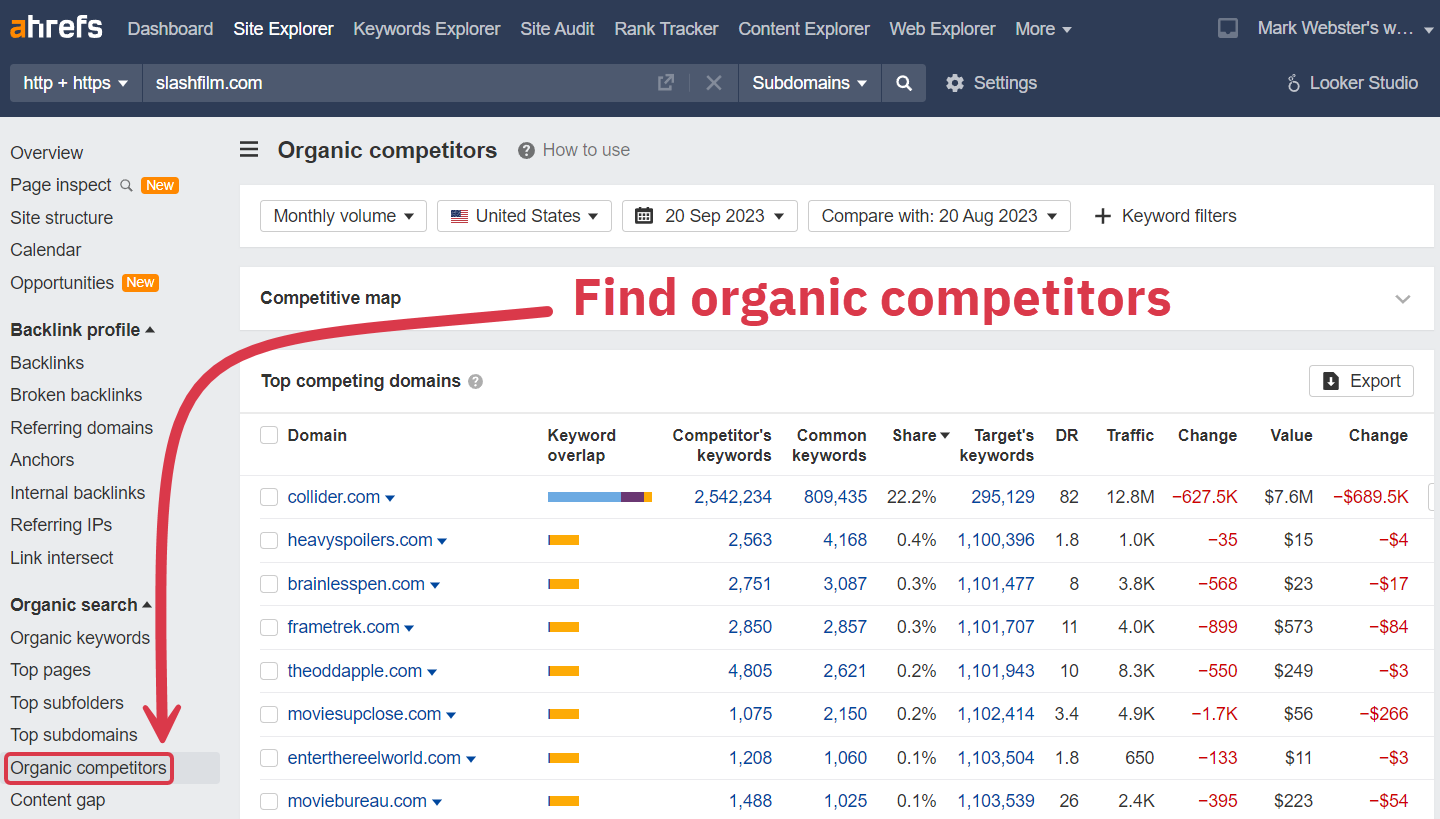
Next, check their traffic level. You can do this using a free trial for SE Ranking. Just go to the SEO Tools > Competitive Research, and enter the names of the different blogs in your list to check their traffic.

Use Google Trends to compare interest in the sub-niches. You can enter a few sub-niches into Google Trends to compare user interest among them over time.
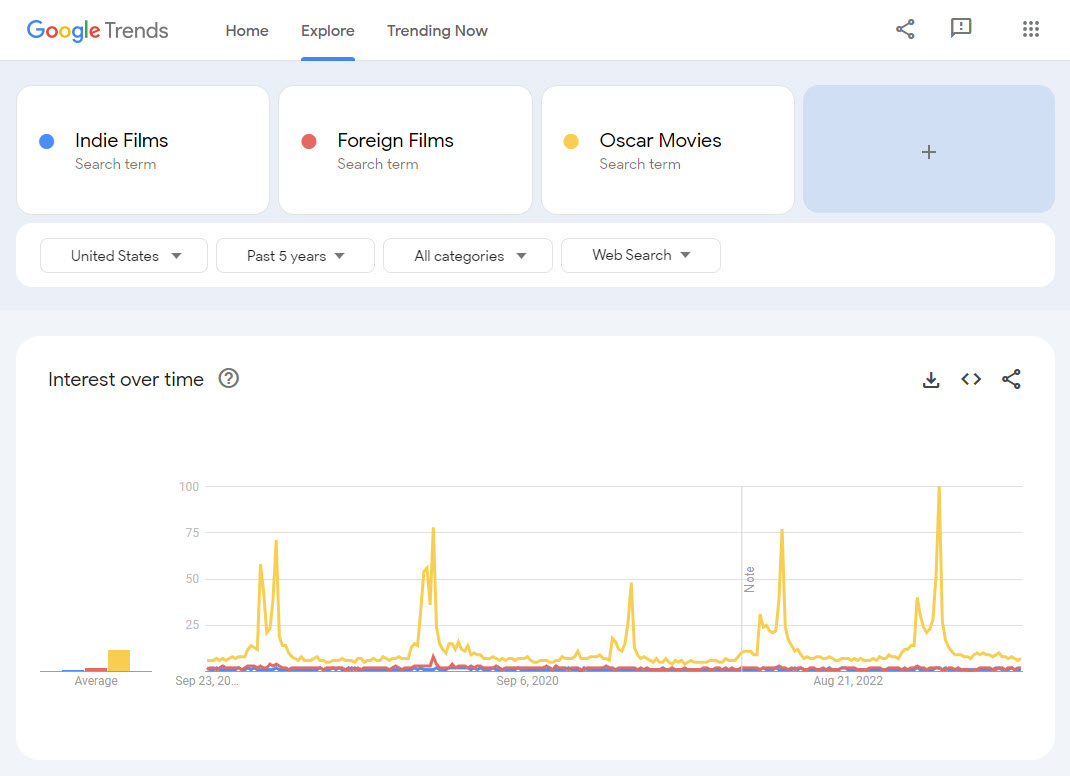
Don’t stress if you can’t figure out the perfect sub-niche right away. It’s normal to take a couple of days or even a week to do all this research. As long as your preferred sub-niche passes the viability test, you can feel secure your movie blog will generate traffic and earn money.
2 Choose a Blogging Platform
Once you select your niche, it’s time to choose a blogging platform.
A blogging platform is a service that lets you write, publish, manage, and share your content online.
👉 You can check out our list of the best blogging platforms to take your pick.
Most beginners choose a free blogging platform like Medium or Blogger for publishing long-form content. However, these free platforms suffer from a few notable downsides.
- The platform controls your content’s visibility, making you a slave to the algorithm.
- It’s hard to monetize content published on these free-to-use platforms.
- A lack of customizability and design options makes it difficult for you to stand out.
If you want to bypass all these cons, I recommend building your own website. Here’s a quick overview of the main benefits of having your own blog:
- Show ads and integrate affiliate links into your content to monetize your blog.
- Change the color scheme or site layout to create an eye-catching design.
- You have complete control over your blog. No one can delete or remove your content.
- You can insert relevant keywords in your blog posts and use SEO (Search Engine Optimization) to drive free organic traffic through search engines.
- Your blog can help grow your social media accounts and keep you in touch with fans via social platforms.
- You can build an email list, giving you direct access to your audience and protecting you from search engine algorithm changes.
- Your blog is an asset, and you can sell it for big bucks. (We’ve sold multiple blogs for 6-figure exits.)
The only caveat is that it’ll take around an hour or so to set up and will cost you around $45 ($10 domain + $35 hosting) to get started. But, if you ask me, the potential return makes it well worth the investment.
To build your website, we recommend using WordPress.org (not to be confused with WordPress.com).
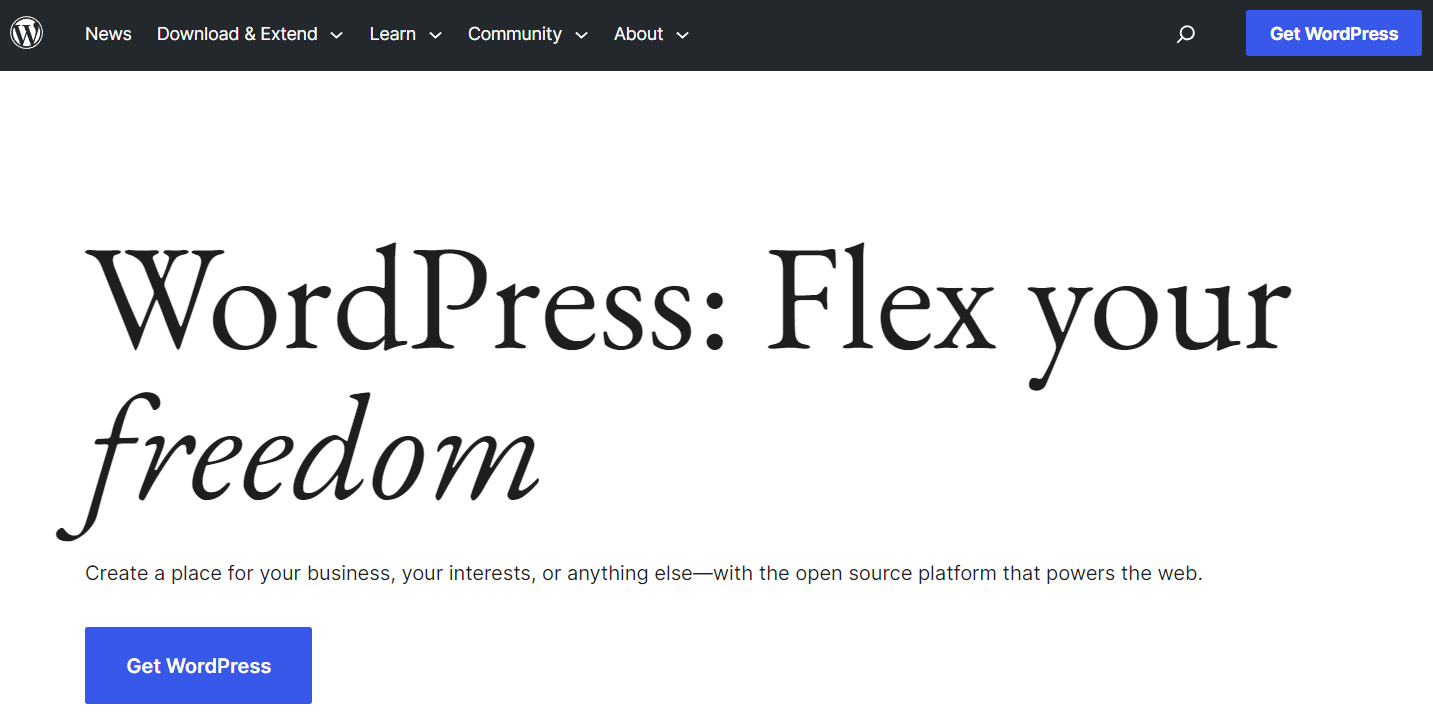
It is free to use (domain and hosting extra) and gives you access to thousands of themes & plugins, so you have complete control over your site’s looks and functionalities. In fact, It’s what we use at AuthorityHacker, and it’s the platform of choice for 43% of the world wide web.
3 Choose Your Domain Name
With your niche and blogging platform ready, it’s time to pick a domain name.
Your domain name is your website’s address that includes the name of your website and a domain name extension like “.com.” For example, AuthorityHacker is the name of our website, and authorityhacker.com is our domain name.

It’s super important that you pick a catchy domain name, as that’ll become your brand identity. A domain name that’s too generic or difficult to read can make it hard to remember. This can reduce direct traffic or word-of-mouth promotion.
Here are a few tips and tricks to help you pick great domain names:
- Use short and memorable names: Aim for 6-14 characters.
- Make them easy to spell and read: Avoid using hyphens, numbers, and consecutive letters.
- Use alliteration, rhymes, assonance, and consonance: “Coca-Cola” uses alliteration, “StubHub” uses rhyme, “YouTube” uses assonance, and “Bitly” uses consonance.
- Align it with your sub-niche: Pick a name that’s relevant to your sub-niche. E.g., A horror movie site can be called chillerthriller.com.
- Avoid trademarked names: Use this trademark search tool and avoid names registered under a trademark.
- Prioritize .com domains: These domain names carry a lot of trust, familiarity, and memorability.
Note: If you have found an excellent domain name for your blog, but the .com extension is not available, you can use one of these popular .com alternatives.
Now, coming up with a domain name that meets all of these constraints can be difficult. This is where Brandsnap – an AI domain name generator, can help you out.
After picking your domain name, you’ll need to buy it. A .com domain will cost you $10 per year on Namecheap.
4 Buy Web Hosting
After buying your new domain name, it’s time to pick a web hosting solution.
Web hosting is a service that provides the necessary tools and infrastructure to store and maintain websites (or web apps) on a server. Once a website is hosted on this server, it becomes accessible on the internet.
Now, there are tons of web hosting providers out there, with Bluehost being particularly popular for its cheap pricing. However, Siteground only costs around a dollar more, but the overall value is much greater, making it an easy recommendation for beginners.
Here’s a simple step-by-step guide to setting up web hosting using Siteground:
Step 1: Visit the Siteground WordPress hosting page.
Step 2: Pick the most affordable StartUp plan. It’s plenty powerful for launching a new WordPress blog.
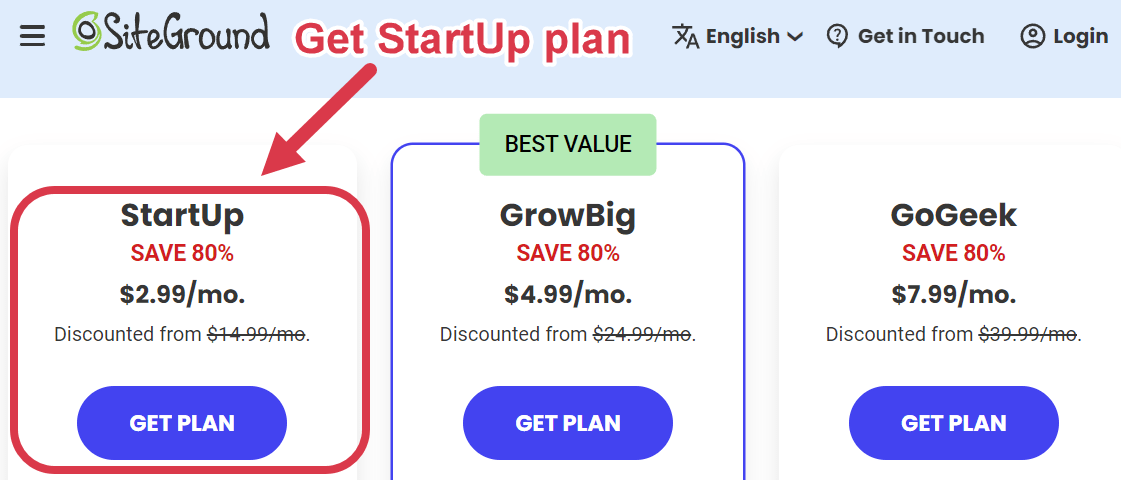
Note: SiteGround, much like other hosting providers, offers a highly discounted price – around 80% – for new customers. Once your subscription term ends, you’ll be billed at the standard rate.
Step 3: Select “I already have a domain” and enter your domain name into the provided field. You can also buy (register) domains on Siteground, but it’s more expensive, so we recommend Namecheap.

Step 4: Enter your account information, location, and payment information into the provided fields.
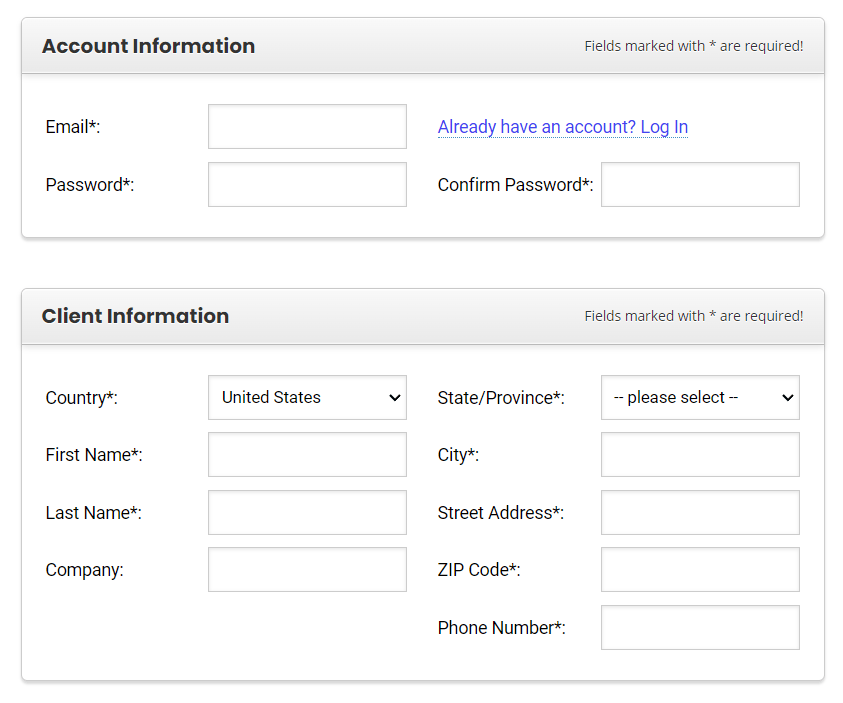
Step 5: Pick a subscription period. (The 12-month usually offers the best deal.)
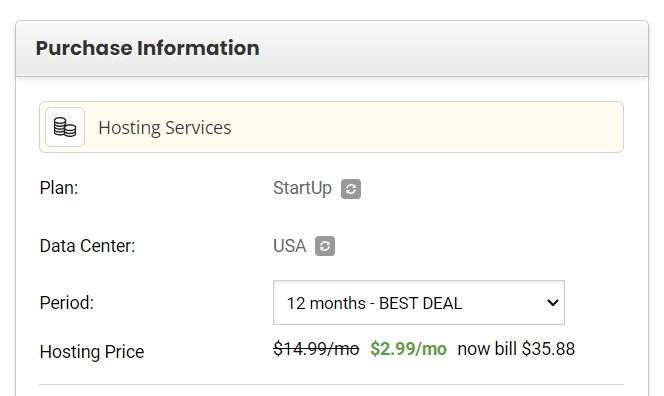
Step 6: Don’t get any of their promotional extra services. They are not necessary for a new blog.
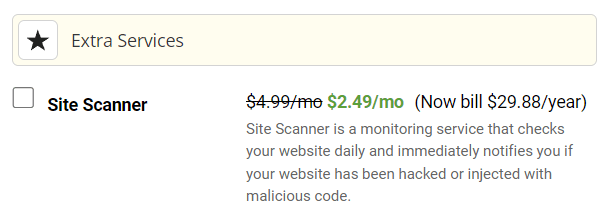
Step 7: Point your Namecheap domain name to your new Siteground server. You can follow this guide or contact the Siteground support team, and they can help you out.
And voila! Your WordPress website is now addressed by your selected domain name and hosted on the Siteground server. In the following sections, I’ll show you how to design the website and add content to it.
5 Choose a Theme for Your Movie Blog
Once you’ve purchased web hosting, you’ll need a WordPress theme to help you customize the structure and layout of your website without coding.
For a movie blog, I suggest choosing a theme that evokes a cinematic vibe, boasting dark backgrounds, big, bold fonts for headings, etc.

There are a few free themes that can give you this look, but you’ll find its basic feature set limiting your site’s growth.
This is why I recommend freemium themes – free versions of premium themes. Start with basic features for free and, as your blog grows, seamlessly transition to the premium version without overhauling your entire site.
If you’re looking for recommendations, here are my top 3 freemium WordPress themes — GeneratePress, Astra, and Kadence.
These themes are not only user-friendly, but have design elements that beautifully complement movie-related content.

Offers tons of pre-designed templates, making it easy to create a visually appealing movie blog.
Get Astra
Features a drag-and-drop header and footer builder with detailed design control.
Get Kadence
A very lightweight performance-focused WordPress theme with a minimalistic design.
Get GeneratePressFor reference, here are our WordPress theme selection guidelines to guarantee a quality pick:
- Does it load quickly?
- Is it mobile-friendly (has a responsive design)?
- Does it come from a reputable theme builder with positive reviews?
- Can you customize it easily?
- Does it provide quality after-sales support?
Once you’ve selected a theme for your movie blog, follow these steps to install it on your WordPress website:
1. Login to your WordPress dashboard
2. From the left sidebar, select Appearance > Themes

3. Click “Add New”
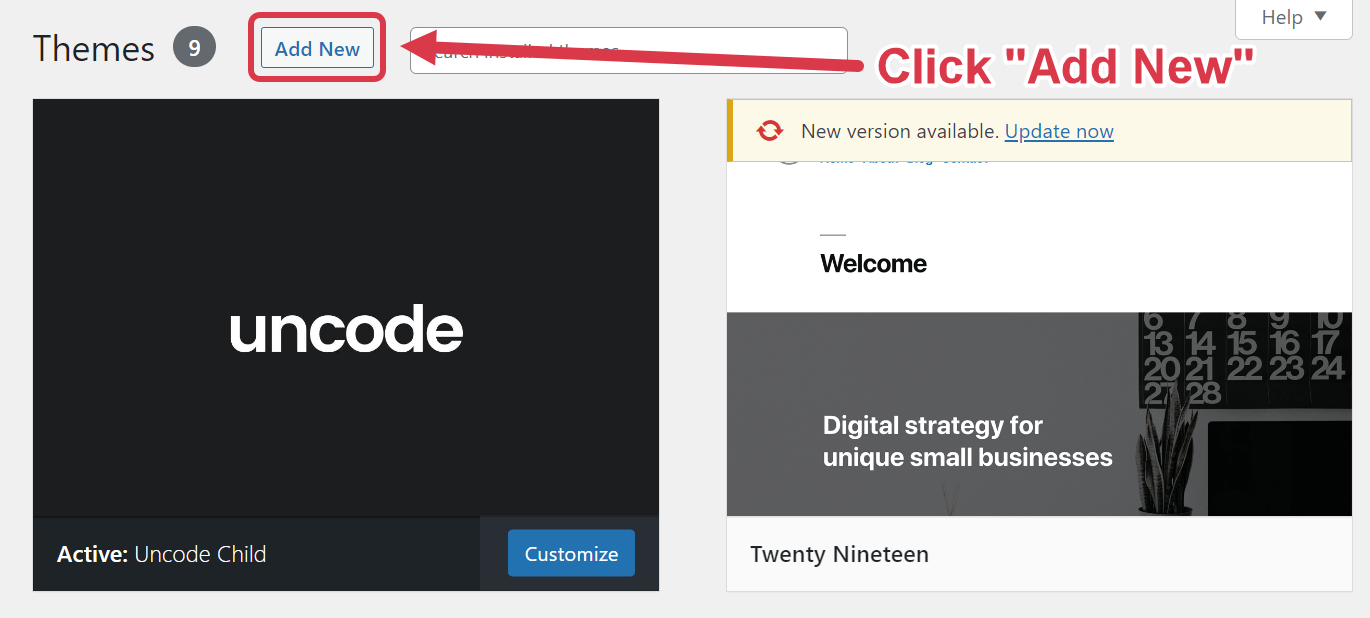
4. Search for your theme and click “Activate.”
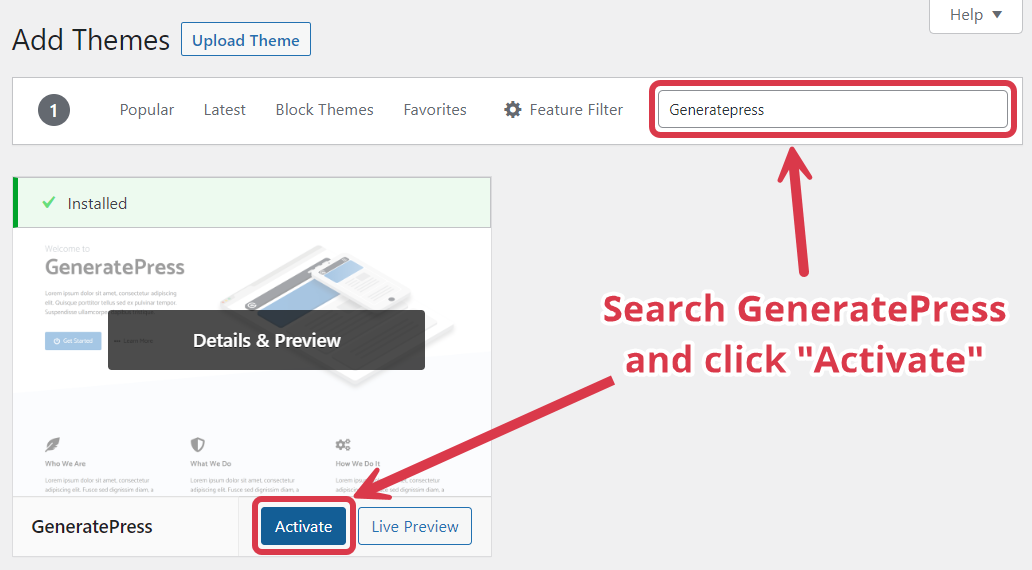
After installation, dive into the theme settings. Customize colors, fonts, and layouts to truly make it your own and align with your movie blog’s brand.
6 Decide on Design & Branding
With your theme set, it’s time to infuse your movie blog with distinct branding elements. This primarily involves selecting a color scheme and crafting a logo that embodies your blog’s essence.
Your branding choices, from colors to logo, play a pivotal role in setting your blog apart and ensuring it’s memorable.
For instance, a film reel logo immediately signifies a movie-centric theme, while a monochromatic gray palette with soft pastel accents might evoke modern indie cinema vibes.
To create a harmonious color scheme, aim for about 5 complementary colors. Avoid jarring combinations, like deep red backgrounds with blue text.
If you’re unsure, use Coolors – a tool to help you visualize and choose appealing color combinations.
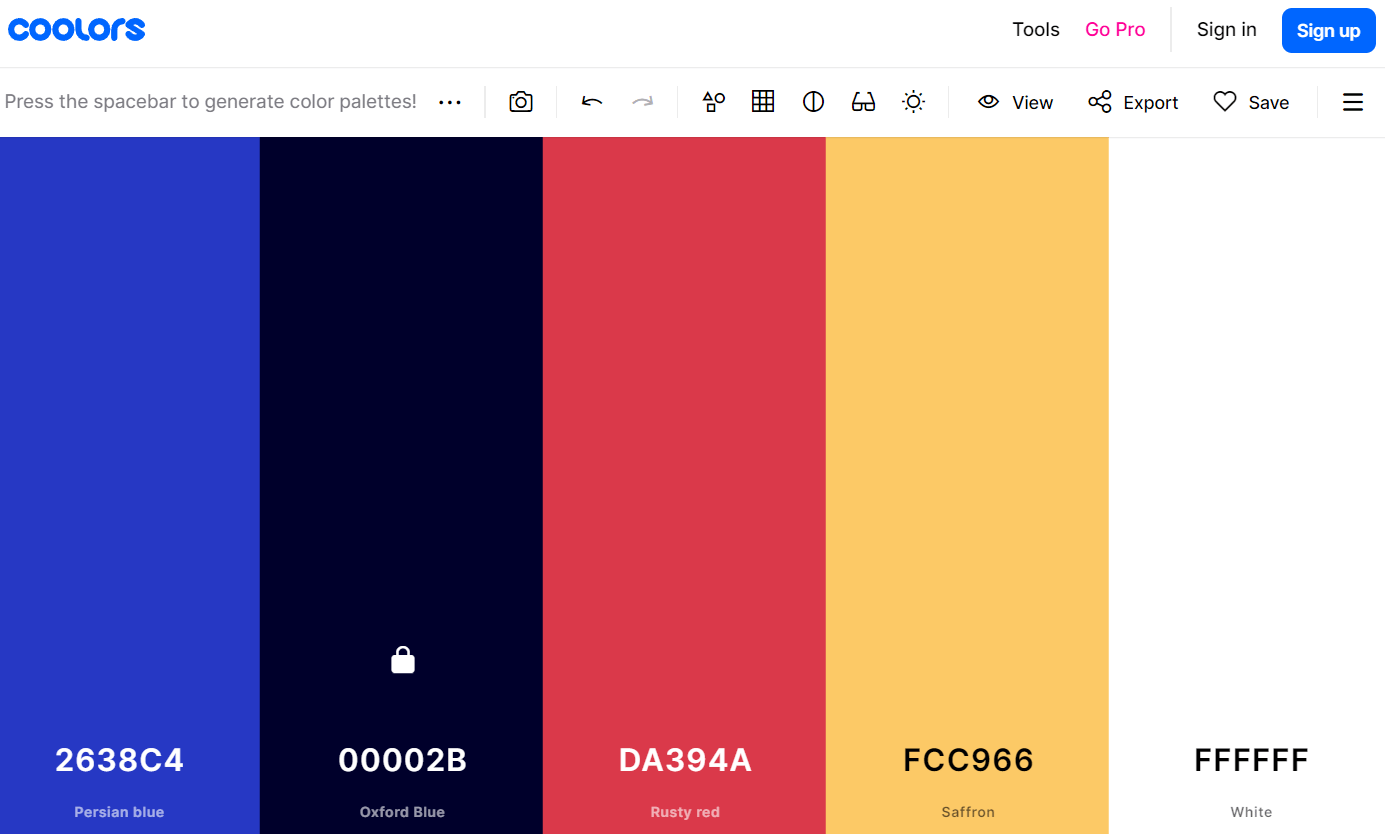
Next, design a logo that aligns with your blog’s theme and color scheme. Canva offers a plethora of logo templates tailored for various niches, including movies.

Simply search for “movie logo” on Canva, pick a design that resonates, incorporate your blog’s name, adjust the colors to match your scheme, and voila – your logo is ready!
7 Create Essential Pages
With your blog’s design handled, it’s time to add some content, starting with 4 essential pages every blog must have.
Homepage
This is the page where visitors land when they enter the blog’s domain name. It should highlight your key content to convey your blog’s theme and showcase top articles.
About Page
This is where you talk about why you decided to start this movie blog and where you want to take it. Include a few personal stories about how movies influenced your life to showcase your passion and build trust with readers.
For inspiration, check out our list of killer About Me page examples.
Contact Page
At a minimum, this page should contain a form for readers, potential contributors, or advertisers to contact you. You can also add your social links here. Additional contact details like address and phone number can help boost SEO.
Privacy Policy + Terms & Conditions Pages
These pages are legally necessary to outline user data handling and site usage. You can use PrivacyPolicy.com to generate these pages with a couple of clicks.
For reference, you can create a new page on your WordPress blog by logging in to your WordPress dashboard and selecting Pages > Add New from the left sidebar.
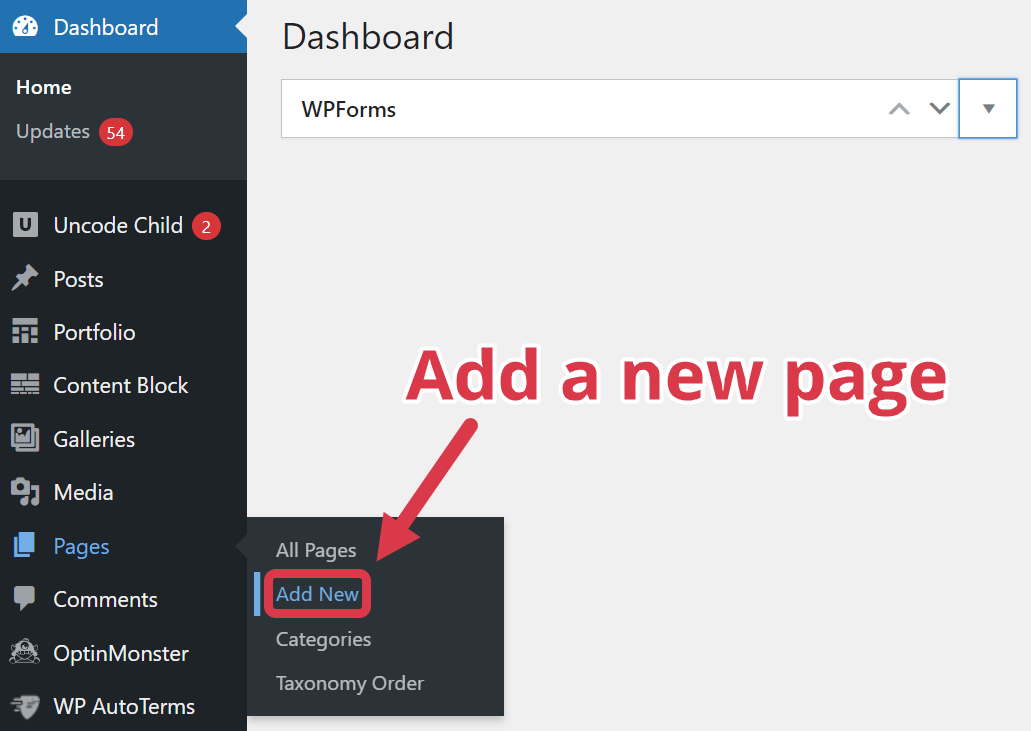
8 Start Creating Content
Now that you have laid down all the groundwork – it’s finally time to start writing and publishing articles on your movie blog.
That said, while you can write about any topic you like, focusing on keyword-driven content can bring organic traffic to your blog without active promotion. This is called a keyword-focused content strategy.
First, you need to find keywords or phrases that many people are searching for.
With your keywords in hand, craft articles that not only incorporate these terms but also provide genuine value to your readers.
When your content aligns with what users are searching for, search engines like Google take notice. They’ll rank your articles higher in search results, driving a steady stream of organic traffic to your blog.
However, a word of caution: the most popular keywords often come with fierce competition. Google prefers established movie review websites, making it challenging for a new movie blog to break through.
The solution? Focus on less competitive keywords that still attract a significant number of searches. Tools like Ahrefs are very useful here.
For example, searching for “movie recommendations” in the Ahrefs Keyword Explorer tools, I get the following related keywords with search metrics:
| Keyword | Search volume |
|---|---|
| Movie recommendations | 12k |
| Movie recommendations on Netflix | 1.6k |
| Scary movie recommendations | 600 |
| Horror movie recommendations | 600 |
| Comedy movie recommendations | 200 |
| Family movie recommendations | 200 |
| Hulu movie recommendations | 150 |
| Amazon Prime movie recommendations | 150 |
| Romance movie recommendations | 100 |
| Anime movie recommendations | 100 |
Such insights can inspire a range of engaging blog topics like:
- Top 25 Horror Movie Recommendations for Friday the 13th.
- Top 5 Romance Movie Recommendations for New Couples.
- 10 Best Family Movie Recommendations for Thanksgiving.
Repeat this process with different seed keywords and come up with 10 solid blog post ideas. Once you have your list, it’s time to delve into the art of SEO-optimized writing.
Here are some guidelines:
- Understand the search intent. Think about why a user might search for a particular keyword. Your content should address that curiosity or need.
- Write for the reader. Are your readers casual movie-goers or bonafide cinephiles? Tailor your tone and content depth accordingly.
- Focus on the topic. If your article is about romantic movies, avoid veering into a tangent about action films. Stay relevant to your chosen keyword.
- Internal linking. If you mention a topic covered in another article, link to it. This not only provides additional information to your readers but also boosts your SEO.
- Format the content for readability. An article that’s easy on the eyes retains readers. Use short paragraphs, bullet points, and subheadings for clarity.
- Share some personal anecdotes. Share anecdotes or personal opinions. It makes your content unique and fosters a connection with your readers.
- Inject emotion. Your blog isn’t a sterile database. Let your passion for movies shine through your words.
- Use multimedia content. Embed movie trailers, share behind-the-scenes footage, and use movie posters to enhance engagement.
- Be careful about copyright laws. Try to only use media files from press kits. Practice fair use and don’t forget to link back to the official source.
If you’re feeling overwhelmed, just remember one golden rule – aim to be more informative and engaging than other articles on the SERP. Consistency in delivering value will naturally boost your search rankings over time.
9 Promote Your Movie Blog
Your SEO-optimized articles will passively garner attention. But you can expedite this process by actively directing traffic to your site.
Here are some promotional strategies to help you reach a wider audience with your movie blog:
- Engage in Movie Communities: Share blog excerpts in movie forums and groups, inviting readers for more in-depth content on your site.
- Leverage Movie Quizzes: Design and share movie-related quizzes on social media. It’s engaging, shareable, and a great way to build an email list.
- Collaborate with Fellow Reviewers: Network with other movie bloggers and propose guest posting. They get free content, and you get exposure to a new audience group.
- Host Virtual Movie Nights: Organize online movie sessions, fostering real-time discussions and directing attendees to related blog posts.
- Launch a Podcast: Start a movie-themed podcast to reach a broader audience and guide listeners to your blog.
However you promote your blog, remember to be genuine and helpful! No one likes – or clicks on – spammy blog advertisements.
10 Monetize Your Movie Blog
Now that you have traffic coming to your blog, it’s finally time to start thinking about monetization.
Here are three strategies that work exceptionally well for making money with your movie blog:
You recommend readers movie streaming services or movie merchandise that you used or reviewed and loved. If they buy the service or product using your link, you earn a commission.
Affiliate marketing
Why It’s Great: Readers discover valuable products, and you’re rewarded for your promotional efforts.
Get Started: Check out our guide on how to start affiliate marketing and view our list of the best movie affiliate programs.
Display Ads
Show ads on your blog and earn money when visitors view or click the ads.
Why It’s Great: Your readers don’t have to spend any money, and you get to turn user engagement into cold hard cash.
Get Started: The easiest way is to join an ad network. For new blogs, we recommend Ezoic over the popular Google Adsense as it’s more beginner-friendly.
Alternatively, you can find direct sponsorships specific to the movie niche, where you get more control and more profits.
Sell Memberships
Create high-quality content only accessible to paying members. This can be detailed film analysis, exclusive interviews with actors or directors, etc.
Why It’s Great: You can create more valuable content and get direct support from your fans.
Get Started: WordPress plugins like MemberPress or dedicated membership platforms like Patreon can help you set up and manage memberships.
Summing Up
Building a successful movie blog takes time, effort, and a willingness to continually learn and improve.
While this post outlines the essential steps, there are many nuances to grasp as you grow your site.
That’s why we’ve put together a free training outlining the most effective strategies to get a new blog off the ground.
In particular, this free training shares seven insider secrets that can increase your new site’s growth trajectory by 83%.
FAQ
Do Film Blogs Make Money?
Many film blogs do make money through various strategies such as running display ads, promoting streaming services, selling movie merchandise, and leveraging other monetization methods. By building a community and consistently delivering valuable content, movie bloggers can generate a steady income from their passion.
How Much Money Can You Make Reviewing Movies?
The average entertainment website makes $4,416 per month, and movie review blogs fall within that category. The exact amount of money you can make reviewing movies depends on many factors, including your website traffic, display ad network, affiliate partners, and how well you monetize your website.








